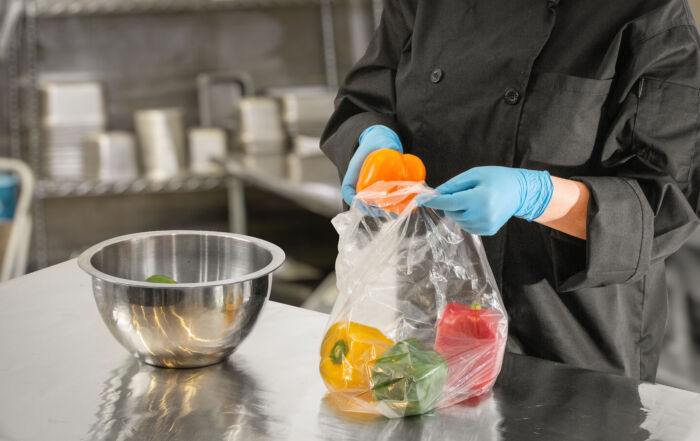Person in Charge has Major Role Related to Employee Health
In the last blog, we talked about the importance of having healthy employees working in a foodservice operation and how that is related to foodborne illness. In this blog, we discuss employee health controls, one of five key public health interventions needed to control for risk factors of foodborne illness. The purpose of this control is to minimize the possibility that employees contaminate food. That means that employees need to be healthy, and that they report any symptoms or illnesses that might impact the safety of food served to customers.
The person-in-charge plays a major role in implementing employee health controls. First and foremost, the PIC needs to understand why employee health is important and its impact on the foodservice operation, what must be reported, when employees should be excluded or restricted from work, when they can return to work, and what must be reported to the regulatory agency.
Second, the PIC must communicate the responsibilities to employees, and must have documentation that employees know what they should do. Each foodservice operation must have written documentation to verify:
- Implementation of an employee health policy. Remember how we keep saying that written standard operating procedures are so important? This is a case in point. Your policy should include what should be reported and to whom. It should outline basic guidelines on when an employee can return to work.
- ALL employees are informed of their responsibility to report symptoms and illness.
- A training curriculum is established and rosters showing that employees have completed the training.
Note: Some managers have employees sign an agreement indicating they have received this information. One resource is Form 1-B, which is included in Annex 7 of the 2017 FDA Food Code (link). It is designed to be used in training and is signed and dated by the employee. This form would serve as documentation that the employee was told about his/her responsibility to report symptoms/illnesses. This form can be used as is, or modified for specific needs of an operation.
Third, the PIC has the responsibility to report some illnesses to the regulatory agency. Additionally, it should be reported if an employee is jaundiced or if they have one of the diagnoses listed on the previous blog.
Exclusion and Restriction
Exclusion means that an employee is not allowed to work, or even enter, a foodservice operation as a food employee. Restriction means that an employee’s activities are limited to prevent transmitting a disease through food. That means that an employee with restriction can’t work with exposed food, clean equipment, linens, or unwrapped single-service/use items.
How do you know when to remove exclusions and restrictions? Section 2-201.13 of the Food Code specifies when removing exclusions and restrictions can occur. It varies based on the diagnosis. For example, in some cases the individuals just has to be asymptomatic for 24 hours, while in other cases the employee must provide documentation that they can return to work from a health practitioner. Also, there is extensive information and discussion about employee health in Annex 3 of the Food Code.
There are many good resources available from Cooperative Extension and professional organizations to assist with communicating elements of an employee health policy. FoodHandler has videos and signage to reinforce fundamental messages about handwashing and avoidance of bare hand contact with foods. A SafeBites webinar on Standard Operating Procedures is also available.
Bottom line—employee health is the responsibility of both the employees and the person in charge. The person in charge has the responsibility to set the work place rules and monitor that they are followed. Be sure that the guidance in the Food Code is followed in your foodservice to minimize the risk for contamination. Risk nothing!
READ MORE POSTS
Preventing Norovirus in your Foodservice Operation
Norovirus is one of the leading causes of vomiting and diarrhea in the United States, [...]
Safe Handling of Leftovers in Foodservice Operations
In any foodservice operation, leftovers are inevitable. After managing a family-style restaurant, where all-you-can eat [...]
Turn your Health Inspector into your Food Safety Ally
For many foodservice operators, keeping up with evolving regulations can feel like chasing a moving [...]
Time and Temperature: Why 41°F to 135°F?
In one of my last blogs, I mentioned the temperature danger zone, or TDZ, as [...]











